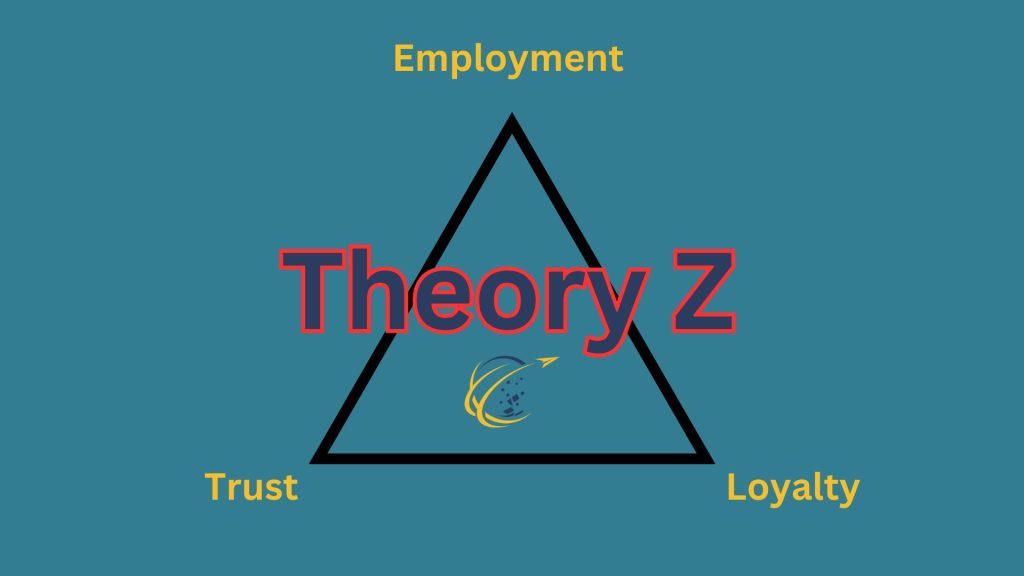
With its focus on employee well-being and stability, this theory fosters a workplace where people feel valued and engaged. This approach not only supports individual satisfaction but also drives overall team productivity. As businesses explore methods for building committed teams, Theory Z offers insights into creating a supportive, trust-based work culture. Understanding its principles can help you develop a workplace that balances productivity with employee happiness.
Introduction to Theory Z: Origins and Key Concepts
Theory Z, developed by management professor William Ouchi in the early 1980s, introduced a fresh perspective on management practices. It emphasizes a balanced approach that values both productivity and employee well-being. Ouchi’s research was driven by the success of Japanese companies, which often demonstrated higher productivity and employee loyalty. He aimed to identify how these principles could be adapted to Western businesses while respecting cultural differences.
At the heart of Theory Z is the concept of long-term employment, which fosters loyalty and trust between employees and management. This approach promotes a stable, committed workforce that feels secure and valued. Theory Z also encourages group decision-making and consensus-building, focusing on shared goals and teamwork. By involving employees in decisions that impact their work, this model aims to enhance engagement and create a sense of belonging.
Another key principle is the balance between work and personal life, which supports employees’ overall well-being. This model recognizes that when employees feel supported, they are more productive and motivated. As a result, Theory Z has been praised for promoting a more human-centered workplace while maintaining business efficiency. Its approach offers valuable insights into building a positive, collaborative work environment that benefits both the organization and its people.
Comparing Theory Z with Theories X and Y
Theory Z offers a unique perspective when compared to McGregor’s Theories X and Y, especially in terms of employee motivation and management style. Theories X and Y describe two contrasting views on how managers perceive employee motivation. Theory X assumes employees inherently dislike work, requiring strict supervision and control. In this model, managers often rely on external motivation, like rewards or punishments, to drive performance. Conversely, Theory Y views employees as naturally motivated and capable of self-direction. Managers adopting this approach encourage autonomy, believing employees thrive when trusted with responsibilities.
Theory Z takes a balanced approach, combining aspects of both theories with additional elements inspired by Japanese management practices. Unlike Theory X, Theory Z does not rely on control or external motivators to engage employees. However, it goes beyond Theory Y by emphasizing loyalty and long-term commitment, fostering a sense of security and belonging in the workplace. This model also stresses collective decision-making, involving employees in processes that affect their roles. By doing so, it encourages a high level of employee engagement and ownership.
While Theory Y values autonomy, Theory Z prioritizes a group-oriented approach. It recognizes that collaboration can strengthen bonds within the team, leading to increased productivity. In this way, it combines personal motivation with a strong, supportive environment, creating a more holistic model of employee engagement. As a result, organizations using Theory Z often see higher retention rates, improved morale, and a more cohesive work culture. This integrated approach helps build a workplace where employees feel both valued and connected, benefiting individuals and the organization as a whole.
Core Elements of Theory Z: Trust, Loyalty, and Long-Term Employment
Theory Z emphasizes building trust, loyalty, and long-term employment within the workplace. This model believes that when employees feel secure in their jobs, they are more motivated and committed to the organization. Unlike short-term, results-driven approaches, it focuses on fostering long-lasting relationships between employees and management, creating a stable and dependable workforce.
Long-term employment is a central aspect of Theory Z. By providing job security, organizations build a culture where employees feel valued and supported. This stability allows team members to invest more in their roles and the company, knowing that their efforts contribute to a lasting relationship. Such an environment encourages loyalty, as employees are more likely to remain with a company that prioritizes their well-being and future.
Trust is another key element of Theory Z. Managers adopting this model often involve employees in decision-making, reinforcing mutual respect and confidence. When team members participate in meaningful choices, they feel trusted and respected, which further strengthens loyalty. This collaborative approach creates a cohesive work environment where everyone feels responsible for the company’s success. Theory Z ultimately promotes a workplace that values commitment and mutual trust, leading to a positive, engaged, and productive team.
How Theory Z Improves Employee Satisfaction and Productivity
Theory Z promotes employee satisfaction and productivity by focusing on well-being, job stability, and mutual trust. This approach considers employees as valuable, long-term contributors rather than short-term resources. By emphasizing job security and fostering loyalty, Theory Z creates a work environment where employees feel appreciated and secure. As a result, they are more likely to invest their time and energy into their work.
One way Theory Z enhances engagement is by involving employees in decision-making. When employees participate in choices that impact their roles, they feel a sense of ownership and pride. This involvement not only improves motivation but also encourages creativity and problem-solving. Employees who feel heard and valued often perform at a higher level, contributing actively to the company’s success.
Additionally, Theory Z’s focus on long-term employment builds stability within teams. When people work together for extended periods, they develop stronger relationships and better communication. This stability boosts productivity, as team members can rely on each other’s skills and support. In this way, Theory Z’s approach creates a positive, collaborative workplace that nurtures employee satisfaction and drives sustained productivity. By prioritizing well-being and job security, Theory Z builds a culture where employees thrive, benefiting both individuals and the organization as a whole.
Practical Applications of Theory Z in Modern Organizations
Many modern organizations have applied Theory Z principles to enhance employee loyalty, productivity, and overall satisfaction. Companies like Toyota and IBM, for example, have embraced long-term employment and team collaboration, which are core elements of Theory Z. These organizations focus on fostering stable, trusting work environments where employees feel valued and supported. By emphasizing job security and investing in employee development, they create teams that are highly engaged and loyal.
Google has also integrated Theory Z principles by promoting employee well-being and a balanced work-life approach. Google’s culture emphasizes open communication, employee involvement in decisions, and a supportive work environment. This approach aligns with Theory Z’s focus on building trust and enhancing employee satisfaction. As a result, Google benefits from a motivated workforce, known for high productivity and innovation. Employees are more willing to contribute ideas and invest in long-term goals, benefiting the organization as a whole.
Theory Z principles are particularly valuable in industries that rely on skilled, knowledgeable workers. Companies that apply these principles often see lower turnover rates and stronger team dynamics. This stability not only benefits employees but also improves organizational outcomes by creating a cohesive, dedicated workforce. By adopting Theory Z’s focus on loyalty, trust, and long-term employment, modern organizations build environments where employees and business thrive together.
Challenges and Criticisms
While Theory Z offers benefits like loyalty and job security, it also faces challenges in today’s fast-paced, flexible work environment. One major drawback is its emphasis on long-term employment. Many modern employees prefer flexibility and career variety, making lifelong job commitment less appealing. This model may struggle to attract workers who prioritize mobility and continuous career growth.
Another limitation is its focus on group decision-making, which can be time-consuming. In industries where rapid decisions are necessary, such as tech or finance, taking time to reach a group consensus may slow down operations. This approach could potentially lead to missed opportunities or delays in responding to market changes. Theory Z’s collaborative model, though beneficial for team cohesion, may not suit every industry’s pace.
Additionally, the emphasis on trust and loyalty can sometimes create rigidity within organizations. When companies prioritize long-term stability, they may resist necessary changes or innovations. This focus on maintaining a stable workforce can limit adaptability, as managers may hesitate to restructure or introduce new approaches. Despite these challenges, Theory Z remains valuable for companies prioritizing stability, though it may require adaptation to meet today’s dynamic work demands.
Conclusion
Theory Z offers a unique approach to management that balances stability with employee engagement. By emphasizing long-term employment, trust, and loyalty, this model creates a supportive work environment where employees feel valued and secure. It enhances productivity and satisfaction through collaboration and commitment, benefiting both the organization and its people.
While Theory Z may face challenges in fast-paced industries, it remains relevant in workplaces prioritizing stability and team cohesion. As you consider applying Theory Z, weigh its strengths and potential limitations in light of your organization’s goals. With thoughtful adaptation, Theory Z can contribute to a positive, committed, and effective workforce.


